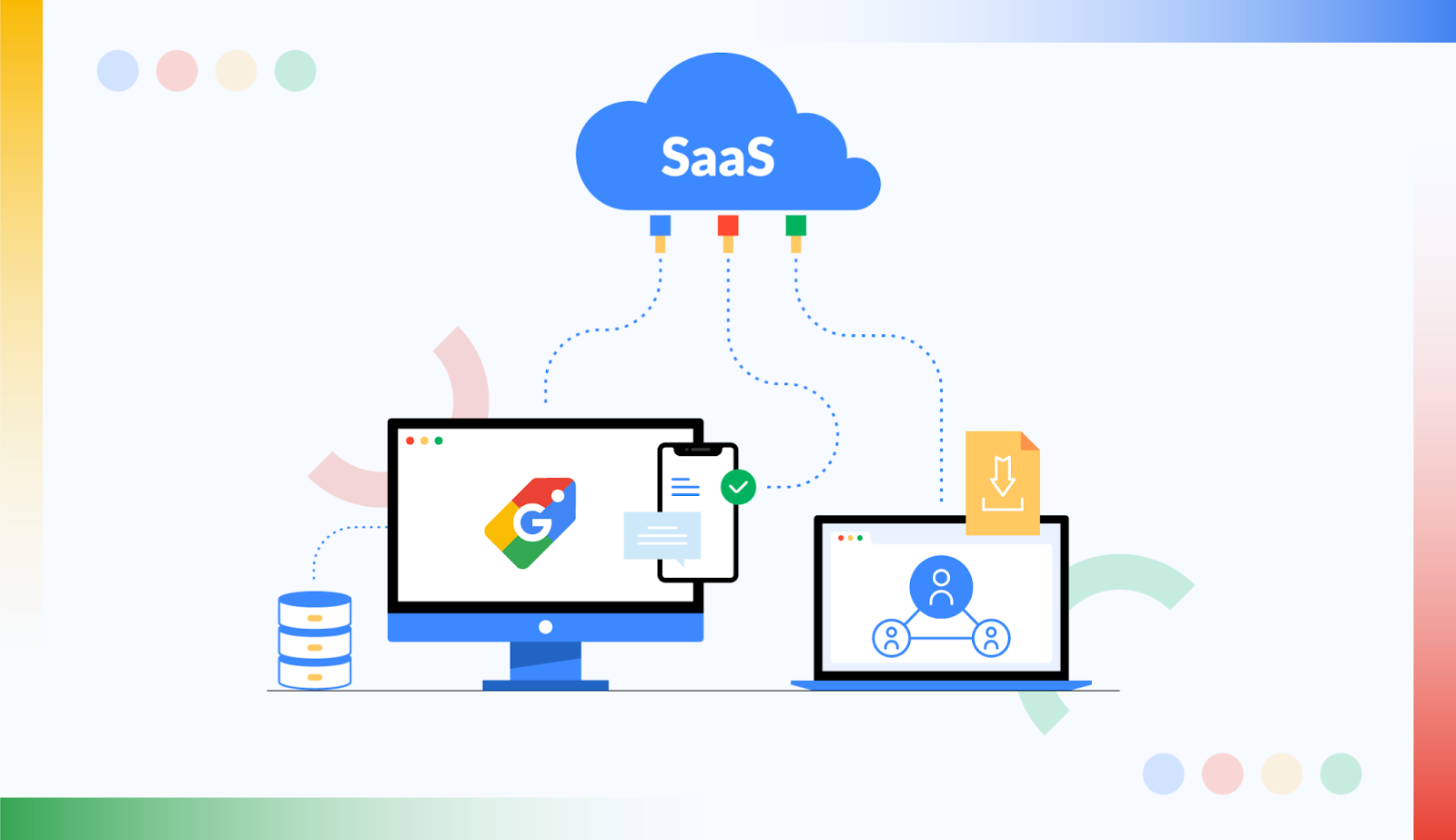Hello!
 Managing AdWords campaigns can be a tricky business, but this is especially true for SaaS marketers. Not only is SaaS marketing a niche field, but software-related keywords can cost significantly more than some AdWords users are used to seeing.
Managing AdWords campaigns can be a tricky business, but this is especially true for SaaS marketers. Not only is SaaS marketing a niche field, but software-related keywords can cost significantly more than some AdWords users are used to seeing.
Luckily, there are some best practices you can follow to make your SaaS campaigns a little easier to manage and a lot more effective.
Ready to take control of your SaaS AdWords Campaign Management? Keep reading.
Don’t Overstuff Your Ad Groups with Keywords
While Google recommends using between 15 and 20 keywords per ad group, it’s actually much more effective to use fewer keywords—maybe even only one.
In fact, single keyword ad groups (SKAG) allow you to get much more granular with your campaigns, which can help reduce wasted ad spend. Plus, because of the high cost of most SaaS keywords, bidding on 20 or more keywords per ad group is a massive and potentially profitless expense.
A lot of SaaS marketers’ initial instinct is that they should add as many related keywords as possible in order to expand their reach.
The thing is, it’s better to narrow your audience and only capture the attention of interested leads than to risk displaying your ads to uninterested consumers who will drain your budget. Focusing on one to five highly-relevant keywords per ad group also gives you more control over message match between your ad and your landing page, which improves user experience.
Target Competitor Keywords
 One common and effective strategy that many SaaS companies use for their AdWords campaign management is to target competitor keywords. Unlike most physical products, consumers need to test software before they’re willing to make a commitment.
One common and effective strategy that many SaaS companies use for their AdWords campaign management is to target competitor keywords. Unlike most physical products, consumers need to test software before they’re willing to make a commitment.
Targeting competitor keywords can help you capture leads who are still shopping around for the perfect SaaS partner. This is a highly effective strategy since the people you are targeting have a known interest in services and products like yours.
By targeting competitor keywords, you can potentially steal them away.
To get started, target your competitor’s brand name plus a related keyword. For example, if you know that your pricing options are better than one of your competitor’s, you could use a keyword like [Competitor Name Prices].
In your ad, you would want to use a headline that highlights your competitive prices. For example, let’s say your company is called BizWare and your competitor is TeleBiz. Your ad might look something like this:
Once the viewer clicks on your ad, they should be taken to a landing page that matches the offer and messaging on your ad. For this example, you might want to include a table that shows a side-by-side comparison of BizWare’s software and TeleBiz’s software.
You’d also need to include a clearly displayed free trial sign up. If your landing page doesn’t match your ad, you’re likely going to have a lot of user’s bouncing back to the search page. Not only does this cost you leads, but it can damage your quality score as well.
Use Negative Keywords Too
 Finding the right keywords is all well and great, but there’s another important element of AdWords campaign management that many SaaS marketers neglect: negative keywords.
Finding the right keywords is all well and great, but there’s another important element of AdWords campaign management that many SaaS marketers neglect: negative keywords.
Negative keywords are terms that you don’t want to trigger your ad. When used conjunctively with regular keywords, this can help you refine your campaigns and eliminate clicks from uninterested users.
One of the main ways that negative keywords help is by eliminating closely related but irrelevant searches.
Scratching your head over that oxymoron? Let me explain.
Say you just started a new SaaS company and for the foreseeable future, you’ll only be serving U.S. clients on the West Coast. But, when you check AdWords, you see that a number of irrelevant, location-based keywords have been triggering your ad:
CRM + Company + Florida
CRM + Company + Massachusetts
CRM + Company + NYC
Because these search queries were all made by users looking for SaaS companies in areas that your company doesn’t serve, they’re wasting your ad spend. Adding terms like “Florida” and “NYC” as negative keywords will ensure that your ad will never be triggered when a user enters one of these terms.
Never Neglect User Experience
 Targeting the right consumers with the most relevant keywords is important, but in order to turn leads into customers, you also need to consider user experience.
Targeting the right consumers with the most relevant keywords is important, but in order to turn leads into customers, you also need to consider user experience.
In addition to using captivating headlines and ad copy that compel searchers to interact with your ad, you need to think about where they’ll end up once they click.
Be sure to design a fast, user-friendly landing page with relevant and useful information. A poorly designed or slow loading page will end up in measly conversion rates.
First off, you need to optimize your landing page the same way you would any other page on your site. Use the keyword in your page title and meta title as well as in the content and headline. This ensures that there is a clear correlation between your ad and your landing page.
If you’re using small or single keyword ad groups and you don’t want to create a brand new landing page for every single one (who can blame you), dynamic text replacement will be your saving grace.
This strategy allows you to automatically replace headlines and other important areas of text with specific keywords. That way, you can offer each user a personalized experience without requiring you to spend hours upon hours creating multiple landing pages.
 Be sure that your landing page’s design looks professional and appealing to your target audience. Additionally, you’ll want to test the usability and loading speed.
Be sure that your landing page’s design looks professional and appealing to your target audience. Additionally, you’ll want to test the usability and loading speed.
Users usually abandon pages that take more than three seconds to load. In order to make sure that you have a shot at converting the leads that click on your SaaS PPC ads, it’s imperative that you improve the speed of your landing page.
BOFU vs. TOFU Keywords
One problem that many SaaS marketers run into with AdWords campaign management is that they target leads at the top of the funnel (TOFU) instead of bottom of the funnel (BOFU) leads.
TOFU leads are people who are in the early stages of the sales funnel. While they may have a genuine interest in your products and services, they’re still quite a ways from making a decision.
Instead, it’s best to limit the number of TOFU keywords you use in your campaigns and instead focus on BOFU keywords. This way, the clicks you get on your ads will be coming from leads who are getting ready to choose a company that meets their needs.
 Because TOFU leads are only just beginning to search for a solution to their needs, the keywords they use are often much less advanced than the search queries that BOFU leads make.
Because TOFU leads are only just beginning to search for a solution to their needs, the keywords they use are often much less advanced than the search queries that BOFU leads make.
For example, adding “What is CRM?” as a negative keyword will ensure that you don’t get clicks from people who are simply educating themselves and nowhere near the purchase decision.
Alternatively, keywords like “CRM best prices” and “CRM service reviews” would most likely come from a BOFU lead that has already completed their initial research.
Retarget Interested Consumers
Using browser cookies, retargeting campaigns track consumer activity on your web pages so that you can advertise to them even after they leave your site. You’ve probably been on the consumer side of this before.
Many ecommerce companies employ this strategy to encourage previous visitors to buy the items they abandoned in their shopping cart. And while those ads that follow you all over the internet may seem intrusive, they really work.
The key is that those retargeting ads don’t allow consumers to place your company in the back of their mind. By repeatedly exposing them to your ads and offers, you can keep them coming back to browse and contemplate your products and services until, eventually, they convert.
 Unlike the ecommerce industry, the beauty of SaaS is that you don’t get a lot of window shoppers.
Unlike the ecommerce industry, the beauty of SaaS is that you don’t get a lot of window shoppers.
That is to say, most of the people who visit your site have at least some interest in your products and services. Because of this, retargeting campaigns can be an incredibly useful tactic to add to your SaaS AdWords campaign management strategy.
You can retarget people who have browsed your website by adding an AdWords tag. But, you can make your campaigns even more successful by targeting people based on the specific URLs they visited. For example, individuals who visited your pricing page may be closer to making a decision. Launching a retargeting campaign will help keep your company top of mind and help push them toward conversion.
When you run retargeting campaigns for SaaS, you’ll also want to make sure to exclude people who have already converted. This is because, unlike ecommerce customers that can choose from hundreds or even thousands of different products, SaaS customers are unlikely to make repeat purchases. Excluding people who have already converted will help you deter wasted ad spend.
Utilize the Google Display Network
 You’re probably aware that SaaS keywords for the search network can be extremely expensive (like, bury your head in the sand expensive). But before you give up, know that there’s another way to reach Google users at a much lower cost: advertising on the Google Display Network (GDN).
You’re probably aware that SaaS keywords for the search network can be extremely expensive (like, bury your head in the sand expensive). But before you give up, know that there’s another way to reach Google users at a much lower cost: advertising on the Google Display Network (GDN).
The GDN is a network of millions of websites used by Google searchers. The main benefit of display advertising is that you get a lot of exposure with many of the same users for a lot less money.
Plus, unlike ads on the Google search network, display ads are image and video-based. However, because most internet users have become accustomed to ignoring ads on web pages, you need to make sure that the visual elements you use are compelling and relevant.
Also read:
- Bhutan’s Bitcoin Boom: Cryptocurrency Accounts for 40% of the Himalayan Kingdom’s GDP
- Future of Cash: Impact of Covid-19 on Payments
- The Future of Content Monetization on Twitter After Linda Yaccarino’s Departure
Final Takeaways for SaaS Adwords Campaign Management
 So, you can take a deep breath now. Does SaaS campaign management sound a little more doable now? Just remember, the secret isn’t overloading your campaigns with keywords or bidding excessively.
So, you can take a deep breath now. Does SaaS campaign management sound a little more doable now? Just remember, the secret isn’t overloading your campaigns with keywords or bidding excessively.
For best results, you need to use small or single keyword ad groups, target your competitor keywords, use negative keywords, improve user experience, reduce or eliminate TOFU keywords, implement retargeting campaigns, and take advantage of the Google Display Network.
Following these tips will help you strengthen your AdWords skills and improve the results of your SaaS campaigns.
Thank you!
Join us on social media!
See you!






